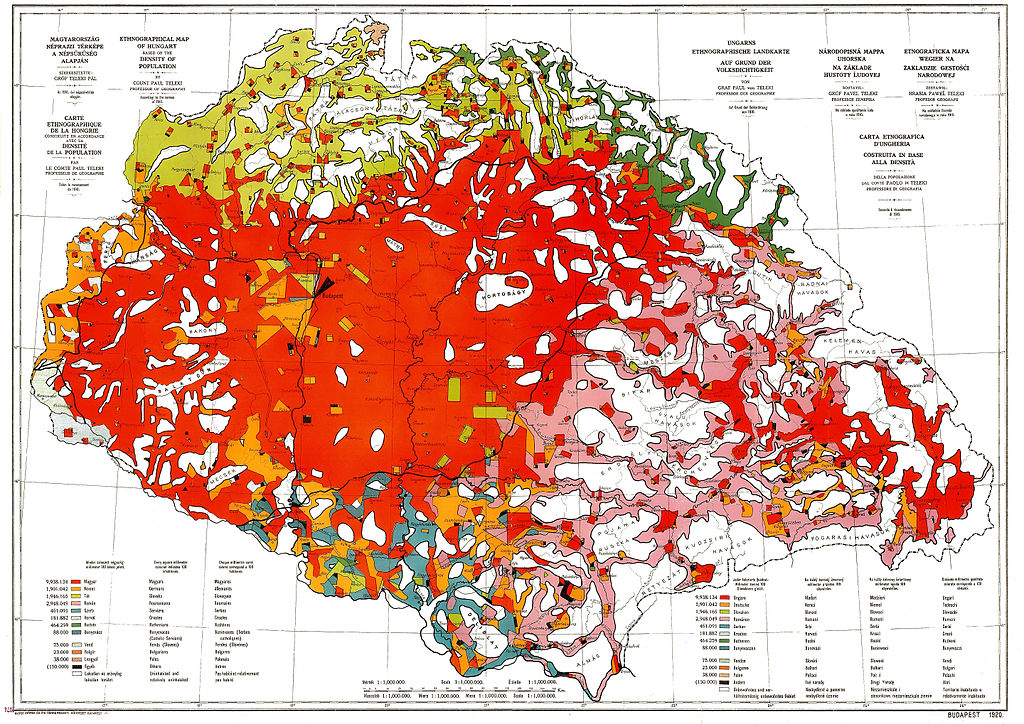British secret service involved in Hungary’s greatest 20th-century tragedy, Trianon?
János Jeney, a Hungarian cartographer, found some interesting evidence about a certain B. C. Wallis, a British expert. We should note his name since he drew a map of Hungary’s ethnic composition in 1918. Later his map served as a reference point to the entente powers when they decided on the fate of Hungary. The result was the peace treaty of Trianon, one of Hungary’s biggest 20th-century catastrophes. We lost 2/3rd of our territories and more than 3.3 million of our compatriots. Now it seems there is a chance that Mr Wallis was the agent of the British secret service.
Trianon was a shock
The peace treaty of Trianon was a shock for Hungary in 1920. Though the political leadership and the Hungarians knew they lived in a multiethnic kingdom, they never would have imagined that they could lose so many territories and inhabitants. Furthermore, from a European Great Power (Austro-Hungarian Empire), Hungary became a small state surrounded by big and hostile countries like Romania, Czechoslovakia and Yugoslavia.
But why did Hungary not prevent that catastrophe? The country was dependent on the benevolence of the entente great powers. In Europe, France was the deciding party, and they wanted a corridor of powerful states around Germany. Therefore, they aimed to weaken Hungary and strengthen its neighbours.
First, nobody invited Hungary to the peace conference because of the Communist coup d’etat of 21 March 1919. After the Soviet regime collapsed, the government received an invitation and travelled to Paris with the so-called “red map”. It was an ethnic map of the Carpathian basin, depicting the Hungarian ethnicity with red colour, which is more apparent to the eye.

However, according to János Jeney, a leading cartographer researcher of the Magyarságkutató Intézet (Institute of Hungarian Research), there was already another ethnic map of the Carpathian region. That map was the work of B. C. Wallis and regarded as an etalon during the peace conference in Paris.
Mr Wallis accepted the ethnic results of the 1910 census conducted by the Hungarian authorities in an article he wrote in 1916. However, for some reason, his opinion changed by 1918. He wrote then that the Hungarian ethnic data were false, so he corrected them. However, Jeney could not find any rules of correction. Thus, he suspects the modifications were arbitrary.
British secret agent?
The British expert created an ethnic map in 1918, which he sent to the great powers. One even reached Australia. Pál Teleki, who became Hungary’s prime minister in 1920 and was a geographer, consciously prepared to debunk Wallis’ notions. His efforts, however, were in vain since the French and the peace conference made up their mind about the Hungarian question before they could hear Teleki’s arguments.

Mr Jeney managed to read the letters of Wallis in the library of the British Royal Geographical Society. Wallis was a member of the Society and regularly worked in its library. However, current members of the Society told Jeney that the British secret service also worked in the library during WWI. Furthermore, Wallis kept telling his pen friends that he could not reveal the real nature of his job even though he worked officially as a secondary school geography teacher.
Thus, it seems the British secret service was involved in the making of the Trianon peace treaty.
Source: mki.gov.hu






For the love of god, Austro-Hungarian empire never reported as to do with the begining of the 1st world war just Hungary???
As to speculative spies and reasons how the empire was split up is a thorn in the side of Hungary but please look at this and how the Austrians treated Hungarians..
Which is an interesting cultural fact that Hungarians didn’t clink beer glasses or bottles together because of the brutal regime they were under..run by the Austrian part of the empire who used to clink there beer glasses together.and Hungarians were 2nd class people.
Well 27 years ago when I first arrived here Hungarians never did but to day they do..